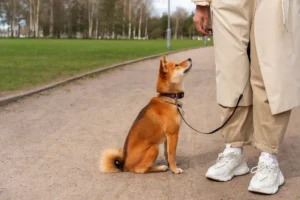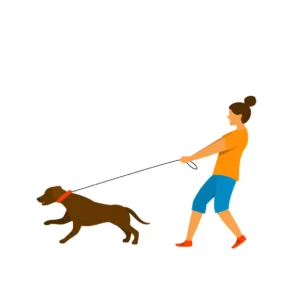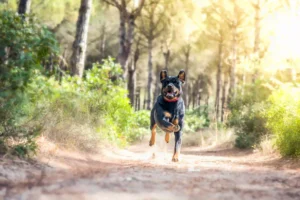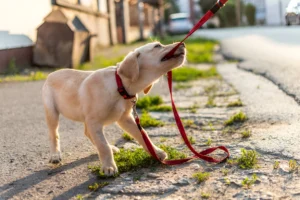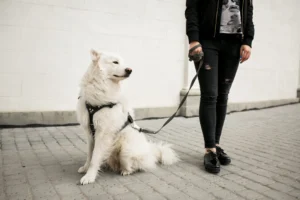The Importance of Consistency How to Train Your Dog to Walk on a Leash without Tugging
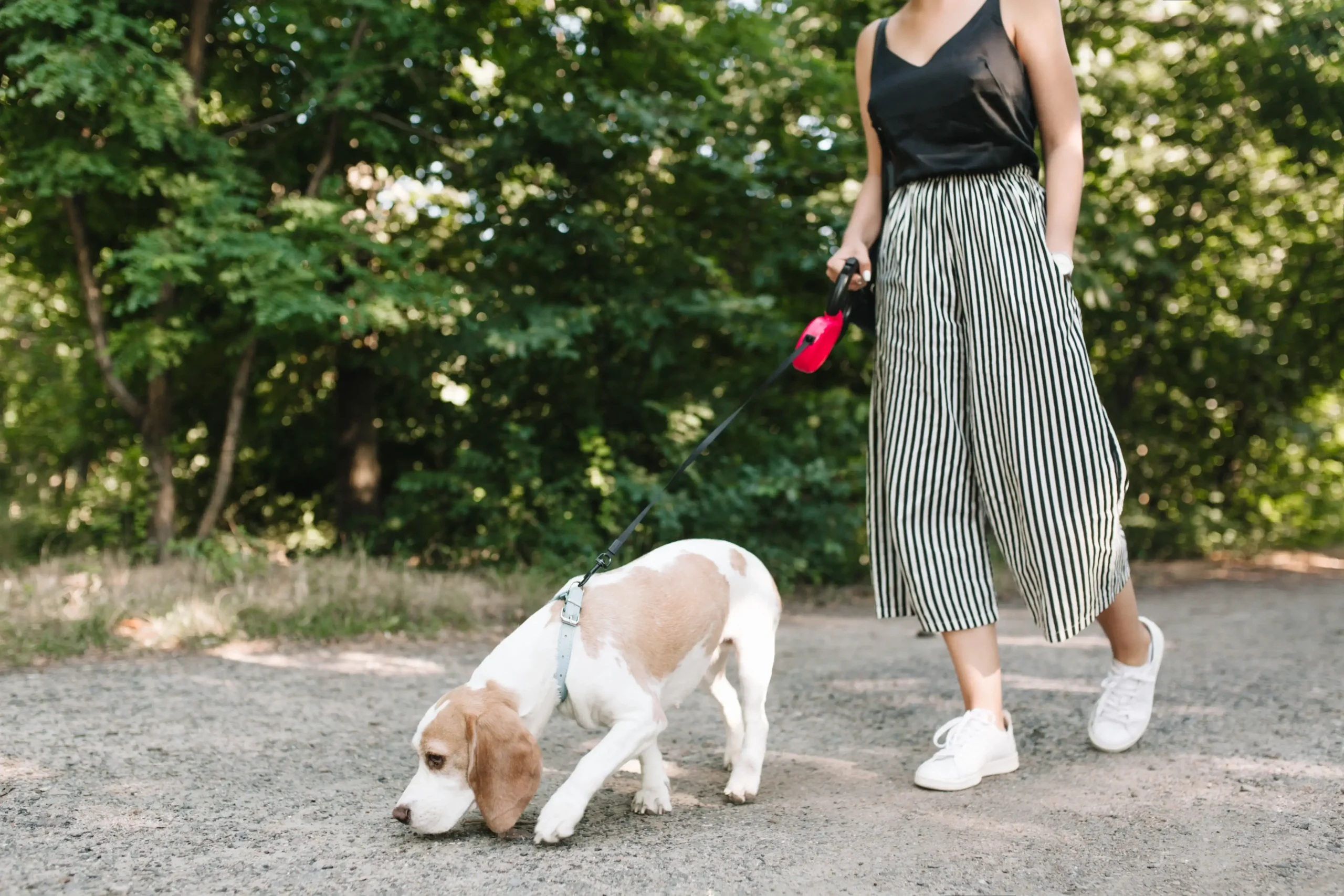
Training your dog to walk on a leash without pulling can be a challenging task, but it’s essential for both you and your pet’s safety and comfort. No one wants to be dragged down the street by their dog or have their pet constantly choking on their leash.
The first step in training your dog to walk without pulling is to choose the right equipment. A chest-led harness can be a great option as it can help stop your dog from pulling forward while walking. Additionally, it has straps that cross above your dog’s shoulders and can be fastened at the center of your dog’s chest. Hence in this article, we aim to teach you how to train your dog to walk on a leash without tugging
Why Walking Your Dog is Important.
Walking your dog provides mental stimulation and socialization opportunities, improves health, and helps prevent obesity. Furthermore, it provides you both with adequate exercise, which is one of the numerous benefits of owning a dog.
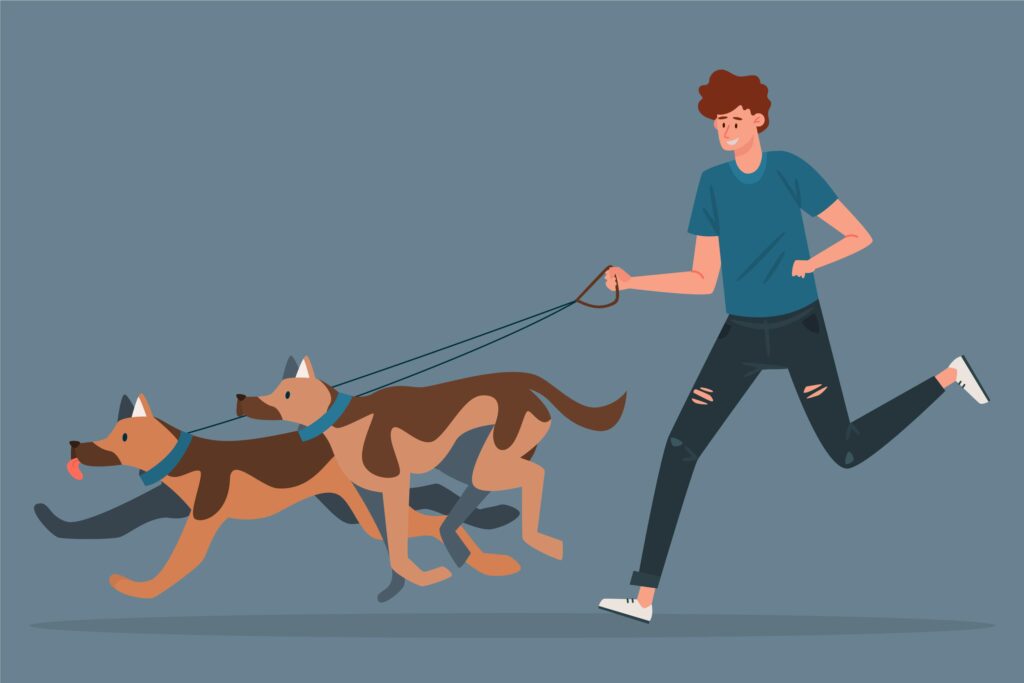
So, if you want to enjoy your daily activities, you must first be training leash your dog.
At What Age Should You Begin Leash Training?
Leash dog training should start as soon as you bring your puppy home, usually around 4-6 weeks old. At this age, puppies are constantly learning new things. With the right amount of treats and encouragement, they’ll soon become leash walking experts.
However, keep in mind that puppies have a limited attention span. In the course of a training session, they could easily become weary and bored. We advise giving your puppy a break every ten to fifteen minutes because of this. Remember that puppies aren’t completely immunized at this age. Until all vaccinations are administered, train just at home.
How to train your dog to walk on a leash without tugging
Going for walks with your dog is one of the best ways to spend quality time with them. As the owner, this allows you some breathing room and a vacation from the day-to-day grind. This gives your dog the opportunity to enjoy a change of scenery from the house they have been raised in.
You can both walk in some freedom and spend quality time together by going on occasional, easy walks.
The most successful methods for how to train your dog to walk on a leash without tugging
Step 1: Learn How to Stand Still While Wearing a Loose Leash
Initially, you should teach your dog to stay on a loose training leash while you stay motionless. Pick up a treat and hold it in your hand to get started.
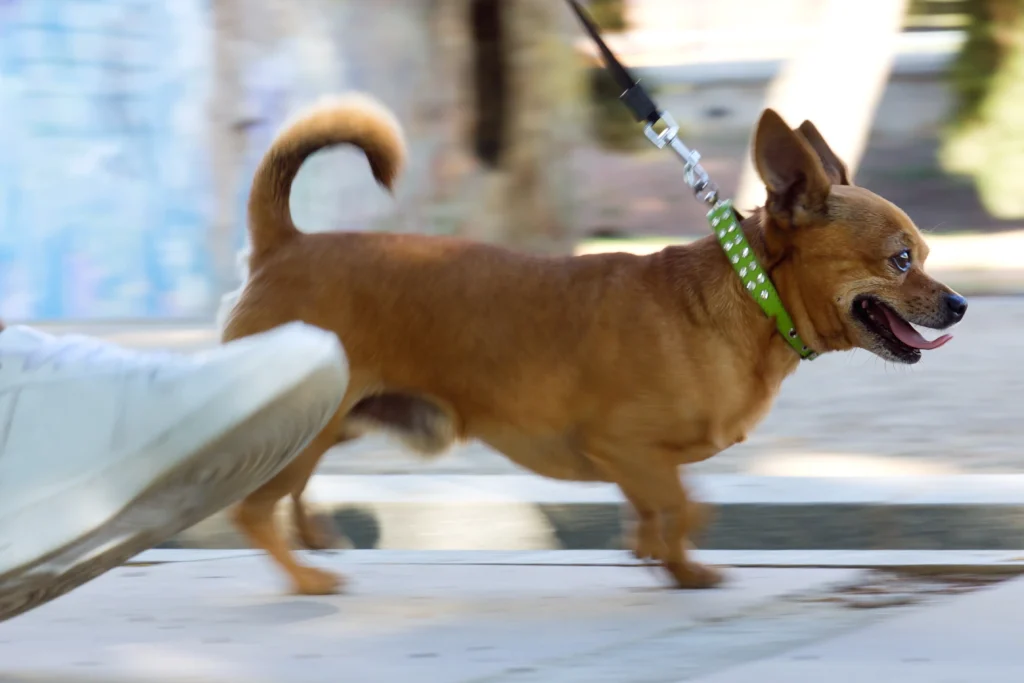
Put on your dog’s leash and take a position. Use a clicker if you are able. Using clickers makes it easier to identify positive behavior. As soon as your dog lets go of the leash. Allow him to witness you putting the treat behind your left knee or on the ground by the outside of your left foot.
Step 2: Add in Low Distractions
You now want to train your dog to stand by your left leg with minimal distractions. Stand alongside your dog on a loose leash. Toss the treat right past your dog’s nose. You want it to land approximately three feet away.
When your dog eats a treat and returns for more, click and reward him by placing the food on the outside of your left foot.
Toss another treat about three feet away after moving away from the previous spot. Repeat until he feels comfortable returning to you.
Step 3: Untied Leash As You Go About Training Your Dog
Moving forward, you should train your dog to sprint to stay by your left side as you move. Place a treat directly in front of your dog’s nose.
Upon finishing his meal and turning to face you again, that’s when it happens this time. Discern and commence your stroll. In the beginning, only take a few steps.
You will then teach your dog to walk beside you on a loose leash. And as well training leash for your dog when he catches up to you, but not before he gets past your leg.
Step 4: Include Additional Steps
You’ll now work your way up to ten steps while your dog walks alongside you. You don’t have to begin with ten steps. Prior to rewarding him, try to get him to take a few extra steps each time. However, always keep in mind that if your dog has acted inappropriately toward you, you should never reward him. At this point, the dog needs to search for the treat, so you can either reward him while he’s close to you or throw it far behind you.
When your dog becomes more adept at this, you ought to be able to go quite a distance without him pulling and running ahead. Your dog must believe that staying close to you has a better chance of success than going out into the world. Otherwise, he will start pulling.
Step 5: Enter The Actual World
It’s time to take your dog for a drive now that it understands the benefits of wearing a loose leash. Start with smaller distractions, like a visit to a new area.
When you’re in unfamiliar settings or face new distractions, be ready to feed more frequently. Your dog is having too much difficulty with the distraction if it is difficult to keep them by your side!
If so, get him to sit, lie down, or engage in some game with you until the distraction subsides, at which point you can resume your loose-leash walking. You can’t teach training leash for dogs to walk on a loose overnight.
Follow these steps to ensure your dog is comfortable with each stage before moving on to the next. This will help you and your dog walk together without frustration or pulling.
How to get a dog to walk on a leash- Comprehending the Issue
1. Why Do Dogs Pull?
Dogs are inherently lively, inquisitive creatures who enjoy exploring their environment. However, walking on a leash could cause issues. Pulling on the rope is a common behavior in dogs, which can make it challenging for owners to maintain control over them. Numerous things, including the following, maybe the cause of this behavior:
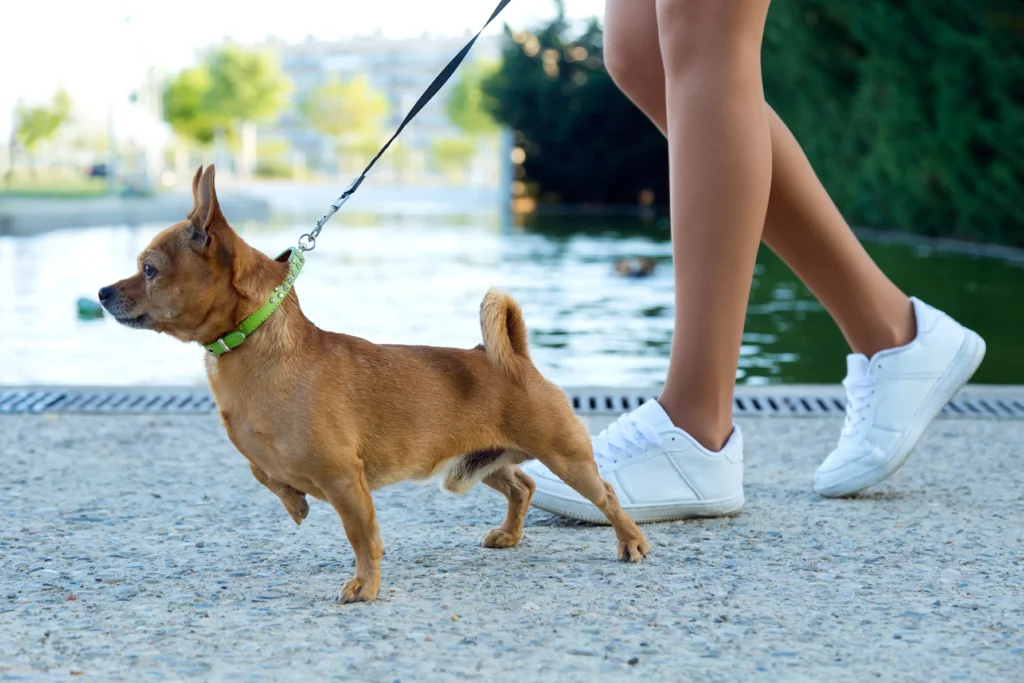
Insufficient training
Canines who are not taught to walk on a leash might not know what is expected of them.
Dogs that are thrilled to go for a walk may tug on the leash because they can’t wait to explore.
Distractions
Dogs are easily distracted by sights, sounds, and smells, which can lead to them pulling on the rope. Further, talk to a dog trainer if you are unable to solve this issue and they will teach you how to get a dog to walk on a leash in detail.
Learn more about how to stop a dog from running away when off leash to ensure better control during walks.
2. The Perils of Withdrawing
It can be risky for you and your dog to pull on the leash. The following are a few dangers connected to this behavior:
Injury: A dog may sustain injuries to their neck, back, or throat if they tug on the leash too forcefully.
Absence of command
When a dog tugs on the rope, its owner may find it difficult to maintain control over their movements, which in some cases may be dangerous.
Stress
Everyone involved may find walks less enjoyable when their dog pulls on the rope, as it can cause stress for both parties.
Hence you must train your dog to walk without tugging on the leash is essential to avoiding these dangers. It will take persistence, patience, and time to accomplish this, but the results will be well worth the effort.
Some Advice for Enjoying Your Walks
Exercise and bonding with your dog can be achieved through walks. When your pet tugs on the leash, though, it can be annoying. You can teach your dog to walk without pulling by using the following advice.
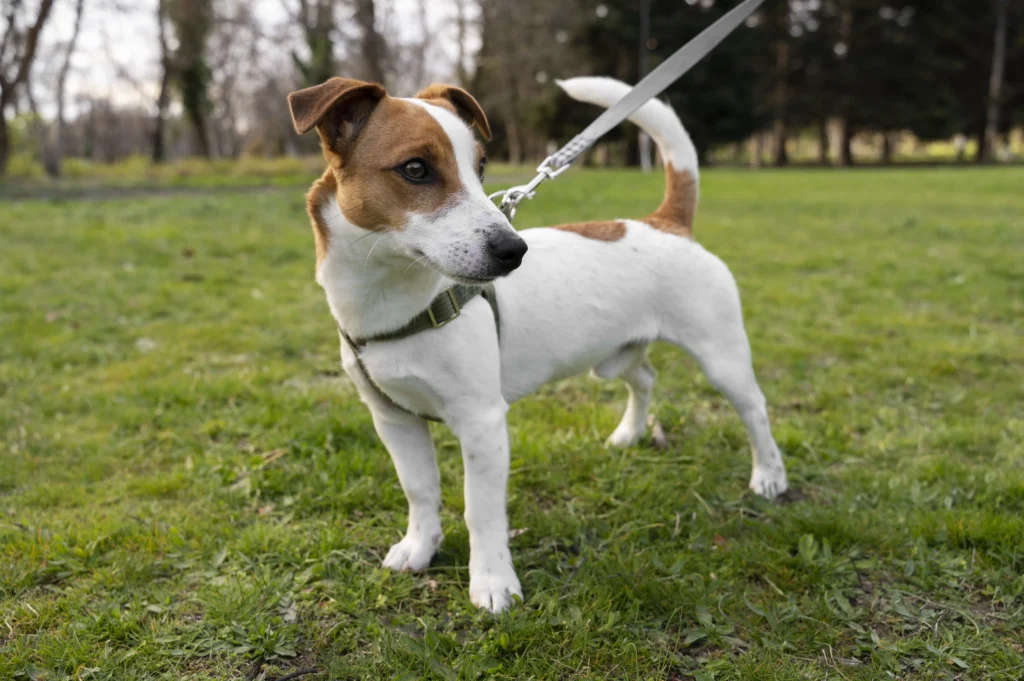
1. Commence inside.
Play indoors for a while with your dog before taking him for a walk. By doing so, they may be able to get rid of some of their extra energy and become more composed and concentrated while walking. To help your dog learn new skills, you can also practice basic obedience commands like sit and stay.
2. Maintain Control
It’s critical to maintain control at all times when walking your dog. Maintain a strong collar and leash, and keep your dog near you at all times. A retractable leash can give your dog too much freedom and make it more difficult to control their movements, so stay away from using one. If your dog begins to pull, halt your walk and give them time to settle down before proceeding.
3. Take Short Walks
Make sure your walks are brief when you’re first teaching your dog to walk without pulling. By doing this, you can keep your dog’s attention and keep them from getting overwhelmed or stressed. As your dog grows more at ease and self-assured, gradually extend and intensify your walks.

